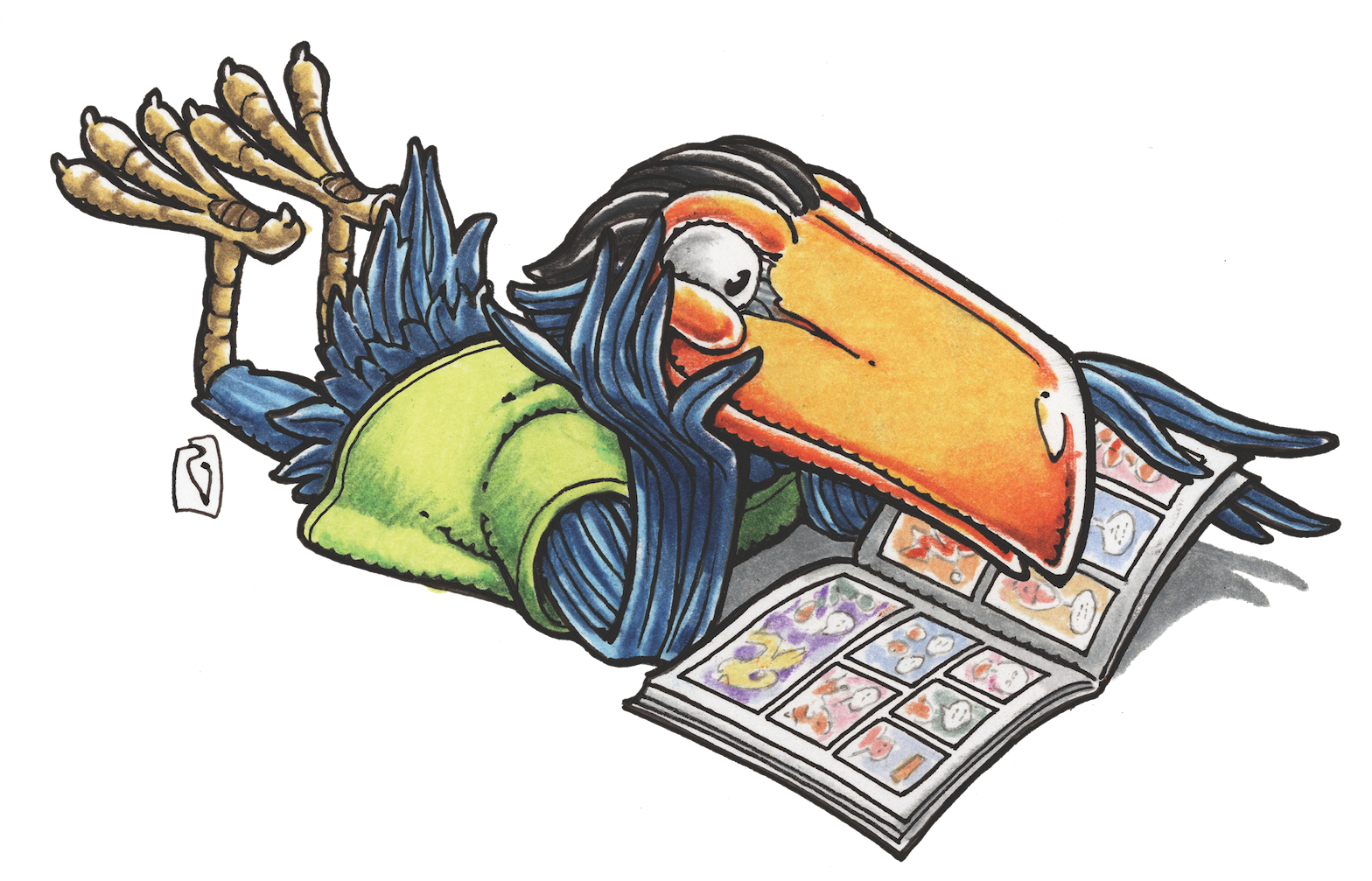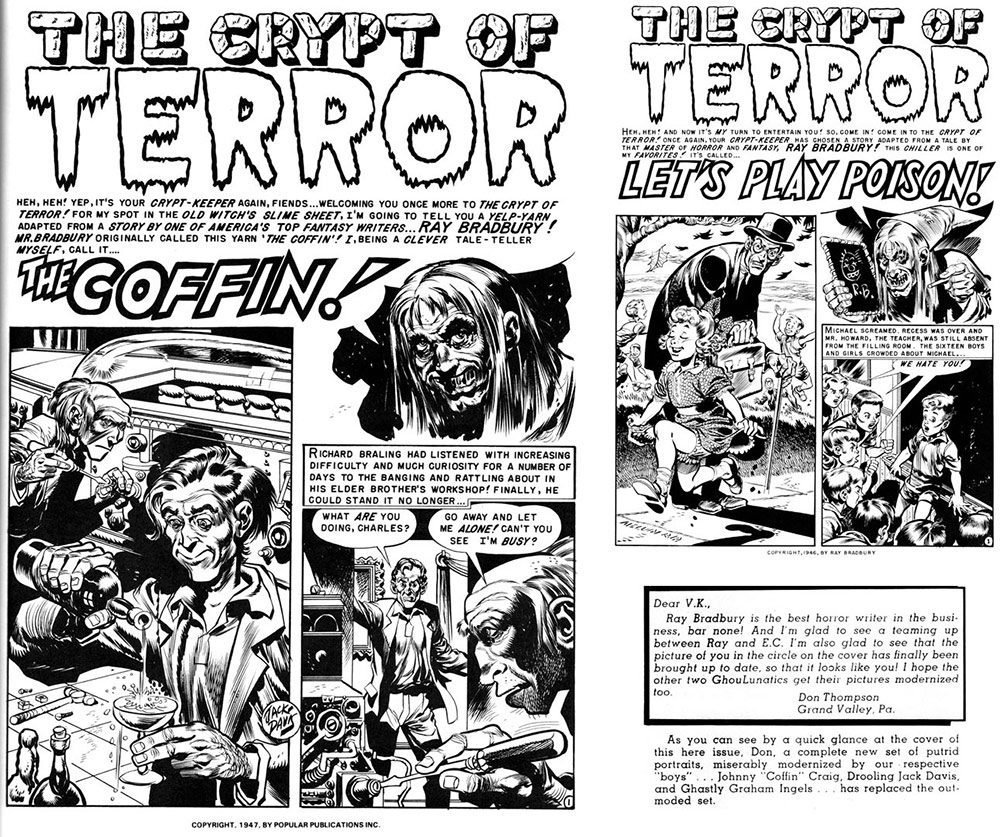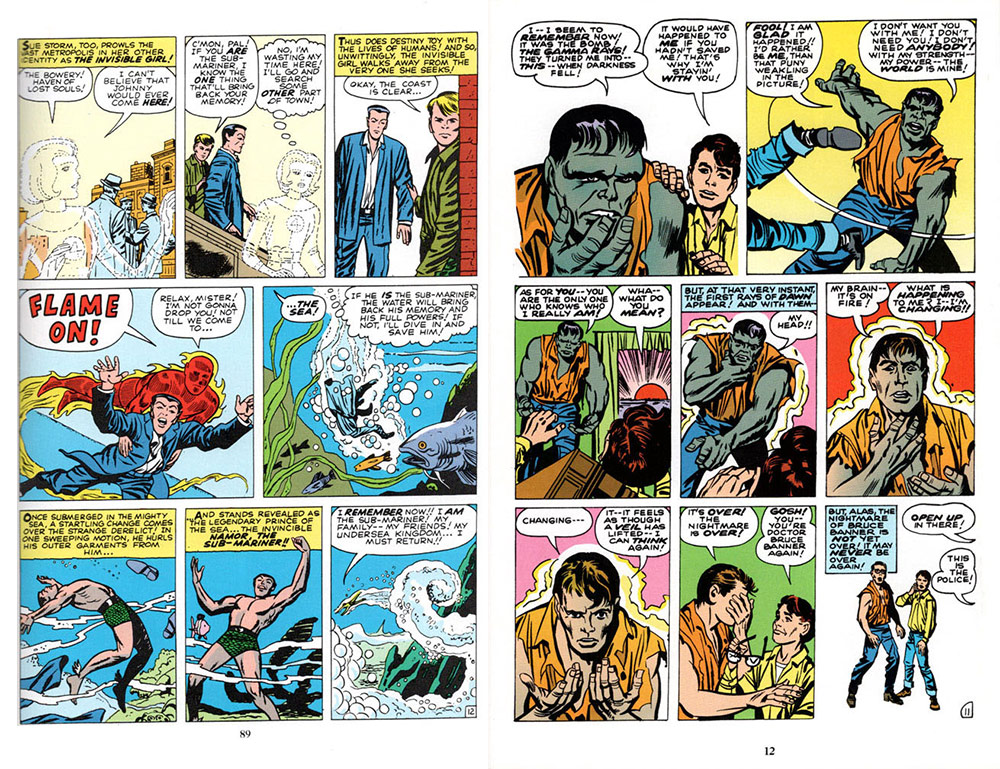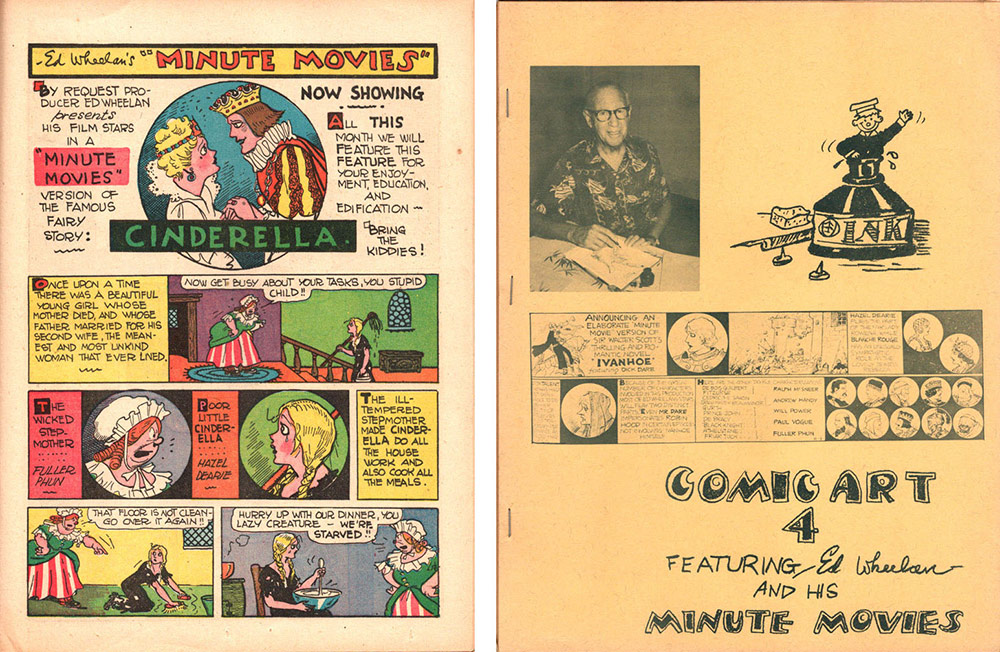MAGGIE’S WORLD BY MAGGIE THOMPSON
Maggie’s World 086: Maggie Anecdotage

Now and then, I’ve been known to launch into a “that reminds me” anecdote—and people have occasionally responded with a “you should write that down.”
Now and then, I check a variety of dictionaries for spellings and definitions, and I recently looked up “dotage” in my favorite, The American Heritage Dictionary of the English Language. And I quote: “Second childhood; senility.”
While not (I hope) quite at the point of senility, I do cherish memories of childhood and the past in general. So here’s an installment of “Maggie’s Anecdotage.”

Early Fandom Days
When Don Thompson and I were beginning to reach out to others who might be interested in the world of comic art, we were often met with skepticism. How did we react?
Well, Don was born 85 years ago. A little over a quarter of a century later, in Comic Art #2, he wrote, “When judging comic books, they should be subject to judging in relation to other comic books, not compared to War and Peace, Crime and Punishment or Huckleberry Finn. Frequently, in the case of the EC comic line, they are equal to or superior to magazine fiction and occasionally anthology material. But many, in fact most, of the EC stories were just a little bit better than the average for comics—and that average was and is pretty low—and some were simply trash. I’m sure many of the readers who wrote enthusiastic letters praising “classic” EC stories would be very embarrassed to read their words now. I know I’m embarrassed by a letter of mine in Vault of Horror (of course, EC applied my comments on Bradbury’s ‘The Coffin’ to his ‘Let’s Play “Poison”’ and added exclamation points, but I was still extreme).”
Among reactions I have these days (aside from the desire to change punctuation) is that, when Don wrote that, he didn’t have the comic books at hand so as to be able to cite details. These days, they’re easy to find. For that matter, he wrapped up that editorial with a plea for identifications for Dell Four-Color issues: a project that took us years to complete.

Then-current Comics
But, hey, how about the early days of the Silver Age? What was our take on what was being published then? In Comic Art #3, Don wrote, “Jack Kirby … has teamed up with Stan Lee to produce some singularly uninspired comic books dealing with trite monsters with ridiculous names such as Krag, Gorm and (so help me) Fin Fang Foom. Jumping on the bandwagon, they have created two comics dealing with super-heroes. The first, The Fantastic Four was panned here last issue. The panning is reaffirmed, albeit more mildly. Despite the fact that two of the four title characters (Mr. Fantastic and Invisible Girl) are less than useless, a sharp improvement in the characterizations of The Thing and the Human Torch brings the book to the fringe of readability. Bringing back the Sub-Mariner helped, too. Unfortunately, The Hulk, newest from Kirby and Lee, isn’t worthy of such faint praise as that. It stinks. A comic-book-length rendition of one of their hack monster stories with a continuing character modeled more or less on the Thing.”
Yikes. Good thing Stan and Jack reacted by giving up on those losers immediately, right?
Time to Learn
If you weren’t there, you may not be able to grasp just how little any of us knew then about comic books, comic strips, animated cartoons, magazine cartoons, and the like. Or about the creators of that pop culture comic art. We had mighty few reference books or ways to look at material from years earlier. (Note: While I was attending Oberlin College, Don and I did spend time in the library stacks reading the comic strips lurking in bound volumes of newspapers. So we did do that.)

In general, we depended on our friends to share their favorites—and Hal Lynch (with whom we’d first discussed producing our own comics fanzine) and Vern Coriell volunteered to write about a classic comic strip: Minute Movies by Ed Wheelan. These days, fans can Google for background and see that it ran in newspapers in the 1920s and for a bit thereafter; comic book fans may recall the comic book-page versions of the strip; and some will know his work best from the 1947-1948 EC Fat and Slat issues. But we didn’t know him or his work at all.
Cue Comic Art #4 (with an editorial written November 30, 1962. [In it, by the way, Don opined, “The Fantastic Four, Journey into Mystery (“Thor”) and The Hulk (in that order) are extremely worthwhile now, after some bad moments in the early issues.” Whew!]
Hal and Vern had called our attention to Wheelan and his wonderful strip but, when they contacted him about writing the article, he responded with hostility out of years of frustration at treatment by professionals and fans who wanted things from him. We wrote to assure him that all we wanted was to share information about the strip that had ended a couple of decades earlier—and we were lucky enough to get permission.
Hal and Vern wrote about the concept, “Wheelan was quick to grasp the fascination movie stars had for people and he created a stock company of ‘actors’ of his own.” We asked Ed where he got the inspiration for his “stars.” “Mary Pickford, when she wore long curls was the one Hazel Dearie was patterned after, although at the time there was Grace Darling, Arline Pretty, Hazel Dawn, Louise Lovely, Bessie Love and points west. Dick Dare was a combination of Francis X. Bushman and Wallace Reid, both blonds. Ralph McSneer was quite a composite of Lew Cody, Stuart Holmes, Lon Chaney, etc. Blanche Rouge was, of course, inspired by Theda Bara, with a touch of Carmel Meyers. Fuller Phun was named during a corny era when such names as Fuller Bull, Fuller Pep, etc. were supposed to be screamingly funny; of course, Fatty Arbuckle was the model. Child star Herbert Honey was taken from Jackie Coogan when he was with Charlie Chaplin in The Kid.” And so on.
Long story short: Ed befriended us, we were treated to a classic strip, and he finally received recognition for a marvelous creation. (Note: There have been a few reprints, but it’d be great for his work to get new attention a century after it originally appeared.)
Fans and pros interacting: It can be pretty fun.
Maggie’s World by Maggie Thompson appears the first Tuesday of every month here on Toucan!